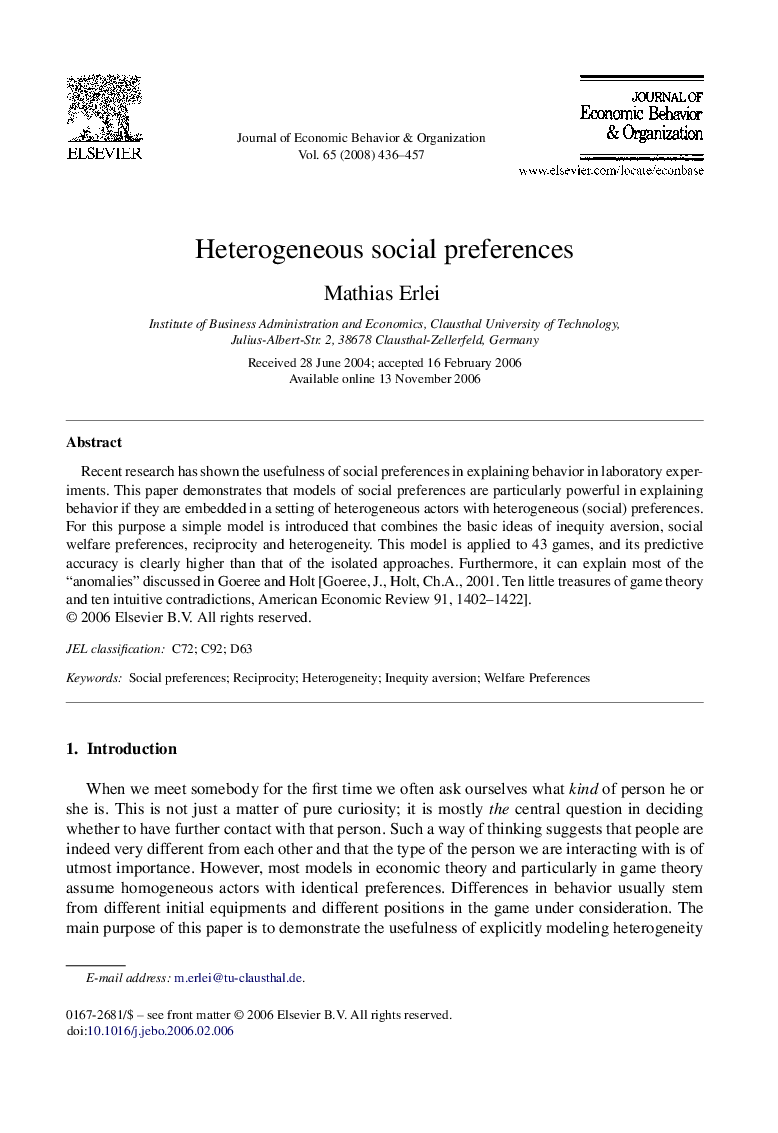| Article ID | Journal | Published Year | Pages | File Type |
|---|---|---|---|---|
| 884456 | Journal of Economic Behavior & Organization | 2008 | 22 Pages |
Recent research has shown the usefulness of social preferences in explaining behavior in laboratory experiments. This paper demonstrates that models of social preferences are particularly powerful in explaining behavior if they are embedded in a setting of heterogeneous actors with heterogeneous (social) preferences. For this purpose a simple model is introduced that combines the basic ideas of inequity aversion, social welfare preferences, reciprocity and heterogeneity. This model is applied to 43 games, and its predictive accuracy is clearly higher than that of the isolated approaches. Furthermore, it can explain most of the “anomalies” discussed in Goeree and Holt [Goeree, J., Holt, Ch.A., 2001. Ten little treasures of game theory and ten intuitive contradictions, American Economic Review 91, 1402–1422].
